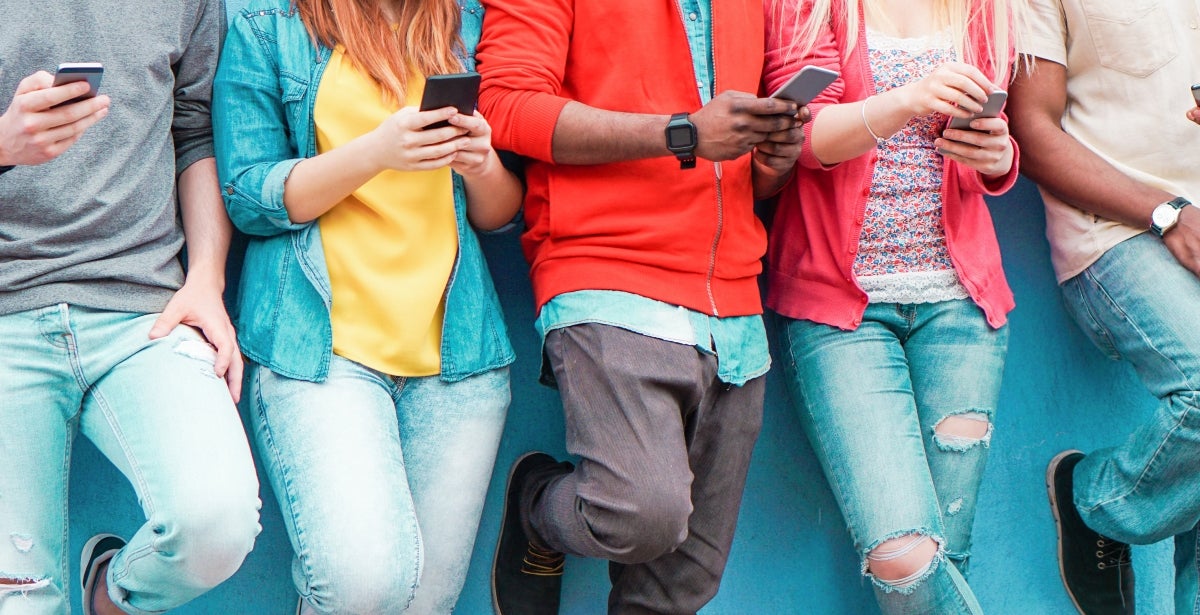
The positive impact of social media on youth mental health
Many debates have been raised about social media’s negative effect on young people. But blanket bans could also be counterproductive and cut young people off from important benefits.
Below, read insights from Dr Elise Carrotte, PhD and Research Assistant in Suicide Prevention at Orygen.
Content warning: This article discusses suicide and self-harm.
Social media is an integral part of young people's lives. But since the early days of these platforms, concerns have been raised about their impact on their health and wellbeing.
Sometimes it feels like we only hear about the bad parts of social media. Indeed, there are currently media debates about banning social media entirely for children and younger adolescents.
But what about the good parts?
The potential benefits of social media
Young people flock to social media for many reasons beyond simply connecting with friends and family. These include:
Entertainment and self-expression
Social media platforms have become a key creative outlet for young people, whether it’s posting photos to Instagram or creating videos for TikTok.
Staying informed
Young people are increasingly nominating social media as their main source of news and current affairs, with some citing celebrity or influencer accounts.
Meeting like-minded people
Through social media, young people can meet new, like-minded people who share their background and offer supportive or validating messages. For example, LGBTQIA+ young people may find community when they don’t have such social support offline.
Access to health and wellbeing information
Young people are also increasingly turning to sites like YouTube for advice on their health and wellbeing. Studies have found many young people believe they can accurately identify health content by cross-checking multiple videos or by judging the presenter or video’s credibility.
Already, many national health and mental health campaigns reach young people through social media.
Social media and suicide prevention
Social media also offers unique opportunities for suicide prevention. Young people who are struggling with self-harm or suicidal ideation may use social media—especially private or moderated forums and direct messaging platforms—to connect with peers, expressing their feelings and urges in supportive, non-judgmental environments.
Social media can be used for sharing educational messages with young people relating to suicide prevention, such as encouraging at-risk individuals to seek professional support and providing resources such as emergency helpline numbers.
The public nature of social media can also result in early identification and intervention. Increasingly, machine learning is being used to identify social media users at risk of suicide, such as identifying negative thinking patterns in text. This data can help with the development of timely digital interventions and inform public health responses.
There are also opportunities for safe, empowering and de-stigmatising conversations about suicide on social media—directly from young people. For example, #chatsafe is a suicide prevention program developed by Orygen that aims to empower and equip young people with the skills to communicate safely online about self-harm and suicide.
This includes the world’s first set of guidelines that educate young people about such conversations. The guidelines have now been translated into 27 languages and downloaded over 130,000 times, with a social media campaign reaching over 5 million people.
How can we make social media safer?
Of course, there is plenty of unsafe suicide and self-harm content on social media, including stigmatising language and jokes, graphic images and videos, and bullying.
Unsafe social content can also spread very far, very quickly. A UK survey of social media users found that over 75 per cent of respondents had been exposed to online self-harm content before the age of 14. Most who had encountered such content had not searched for it.
So how can we protect young people from the harmful effects of social media?
Stronger policies
Young people—and suicide prevention professionals—have called for social media companies to develop more robust and effective safety policies addressing self-harm and suicide content, for better education around safe online communication, and for more collaboration between social media companies and policymakers.
Resources
eSafety—Australia's independent regulator for online safety—has developed resources for young people, families and educators around online safety, though these do not yet focus on suicide and self-harm content.
Acknowledging complexity
Ultimately, the relationship between social media use and mental wellbeing is complex, and is complicated by individual and environmental factors.
When it comes to debates about social media, it is important to acknowledge the benefits and harms and listen to young people alongside professionals.
Leading theories about suicide highlight the importance of social support and connection. This means that blanket bans on social media—a major source of social connection for young people—may end up being counter-productive.
If this article has brought up any feelings of distress, please contact Lifeline on 13 11 14 or Suicide Call Back Service on 1300 659 467.
Dr Elise Carrotte, PhD, is a Research Assistant in Suicide Prevention at Orygen.
Drive a positive impact in the lives of young people with VU Online’s Master of Child and Adolescent Mental Health. Commonwealth Supported Placements (CSP) are available for new and eligible students for the Graduate Certificate in Child and Adolescent Mental Health. This qualification comprises the first four units of the masters degree. To learn more, call our team on 1300 682 051 or email futurestudy@online.vu.edu.au.
-
View previous article
 How to apply for an MBA with VU Online31 July 2024
How to apply for an MBA with VU Online31 July 2024 -
View next article
 What is informatics in nursing?28 August 2024
What is informatics in nursing?28 August 2024

